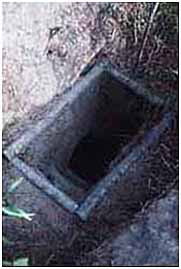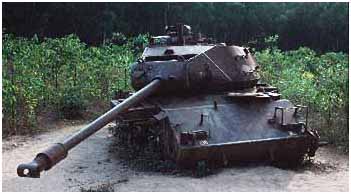
 The strategically important tunnel network of Cu Chi District became legendary during the 1960s for its role in facilitating Viet Cong control of a large rural area only 30 to 40 km from Saigon. At its height, the tunnel system stretched from the South Vietnamese capital to the Cambodian border; in the district of Cu Chi alone, there were over 200 km of tunnels. The network, parts of which were several storeys deep, included innumerable trap doors, living areas, weapons factories, field hospitals and kitchens.
The strategically important tunnel network of Cu Chi District became legendary during the 1960s for its role in facilitating Viet Cong control of a large rural area only 30 to 40 km from Saigon. At its height, the tunnel system stretched from the South Vietnamese capital to the Cambodian border; in the district of Cu Chi alone, there were over 200 km of tunnels. The network, parts of which were several storeys deep, included innumerable trap doors, living areas, weapons factories, field hospitals and kitchens.The tunnels were first constructed in the late 1940s by the Viet Minh: the improvised but effective response of a poorly equipped peasant army to a high-tech enemy. During the Vietnam War, the tunnels enabled isolated VC-controlled enclaves to communicate with each other, and allowed the VC to mount surprise attacks and then disappear without a trace. US frustration at their failure to destroy the tunnels resulted in widespread carpet bombing, turning the area into what has been described as 'the most bombed, shelled, gassed, defoliated and generally devastated area in the history of warfare'.
 Today, the tunnels are a pilgrimage site. Parts of the network are open to the public, though they have been considerably enlarged and upgraded for peacetime visitors. The villages of Cu Chi have been presented with numerous honorific awards and citations, in memory of the 10,000 cadres who did not survive the tunnels and the thousands of civilians who survived the bombings above ground, the underground conditions and the deaths of loved ones.
Today, the tunnels are a pilgrimage site. Parts of the network are open to the public, though they have been considerably enlarged and upgraded for peacetime visitors. The villages of Cu Chi have been presented with numerous honorific awards and citations, in memory of the 10,000 cadres who did not survive the tunnels and the thousands of civilians who survived the bombings above ground, the underground conditions and the deaths of loved ones.